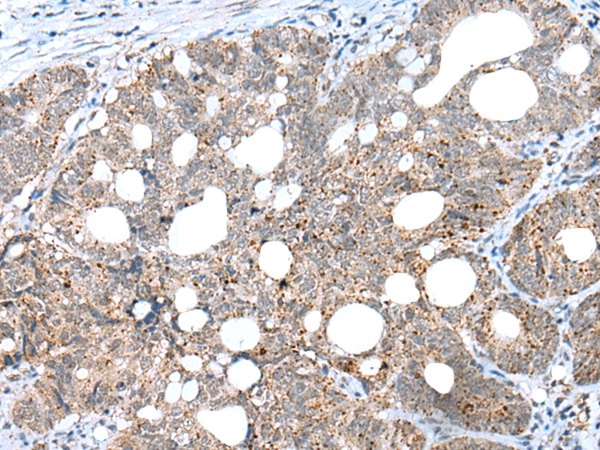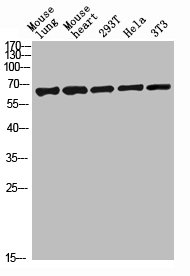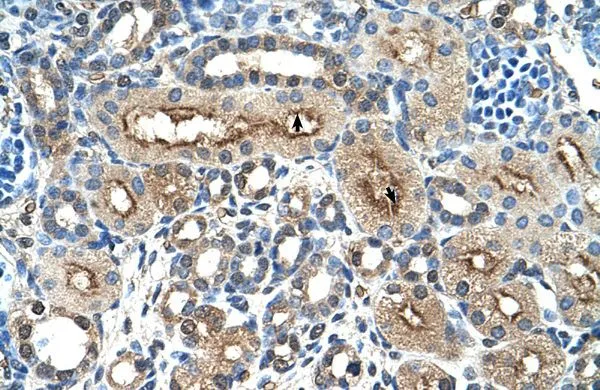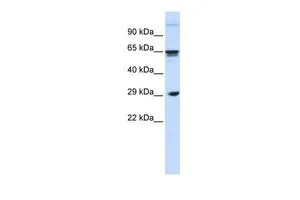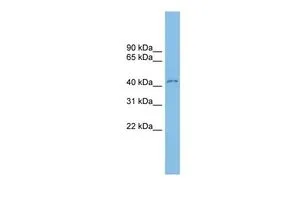
WB analysis of human fetal kidney tissue using GTX47032 CLEC4M antibody at 0.2-1microg/ml.
CD299 antibody, Internal
GTX47032
ApplicationsWestern Blot
Product group Antibodies
ReactivityHuman
TargetCLEC4M
Overview
- SupplierGeneTex
- Product NameCD299 antibody, Internal
- Delivery Days Customer9
- Application Supplier NoteWB: 0.2-2.5 ug/ml. *Optimal dilutions/concentrations should be determined by the researcher.Not tested in other applications.
- ApplicationsWestern Blot
- CertificationResearch Use Only
- ClonalityPolyclonal
- Concentration0.5-1 mg/ml
- ConjugateUnconjugated
- Gene ID10332
- Target nameCLEC4M
- Target descriptionC-type lectin domain family 4 member M
- Target synonymsCD209L, CD299, DC-SIGN2, DC-SIGNR, DCSIGNR, HP10347, L-SIGN, LSIGN, C-type lectin domain family 4 member M, CD209 antigen-like protein 1, CD299 antigen, DC-SIGN-related protein, dendritic cell-specific ICAM-3-grabbing non-integrin 2, liver/lymph node-specific ICAM-3 grabbing non-integrin, mannose binding C-type lectin DC-SIGNR
- HostRabbit
- IsotypeIgG
- Protein IDQ9H2X3
- Protein NameC-type lectin domain family 4 member M
- Scientific DescriptionThis gene encodes a transmembrane receptor and is often referred to as L-SIGN because of its expression in the endothelial cells of the lymph nodes and liver. The encoded protein is involved in the innate immune system and recognizes numerous evolutionarily divergent pathogens ranging from parasites to viruses, with a large impact on public health. The protein is organized into three distinct domains: an N-terminal transmembrane domain, a tandem-repeat neck domain and C-type lectin carbohydrate recognition domain. The extracellular region consisting of the C-type lectin and neck domains has a dual function as a pathogen recognition receptor and a cell adhesion receptor by binding carbohydrate ligands on the surface of microbes and endogenous cells. The neck region is important for homo-oligomerization which allows the receptor to bind multivalent ligands with high avidity. Variations in the number of 23 amino acid repeats in the neck domain of this protein are common and have a significant impact on ligand binding ability. This gene is closely related in terms of both sequence and function to a neighboring gene (GeneID 30835; often referred to as DC-SIGN or CD209). DC-SIGN and L-SIGN differ in their ligand-binding properties and distribution. Alternative splicing results in multiple variants.[provided by RefSeq, Feb 2009]
- ReactivityHuman
- Storage Instruction-20°C or -80°C,2°C to 8°C
- UNSPSC12352203

